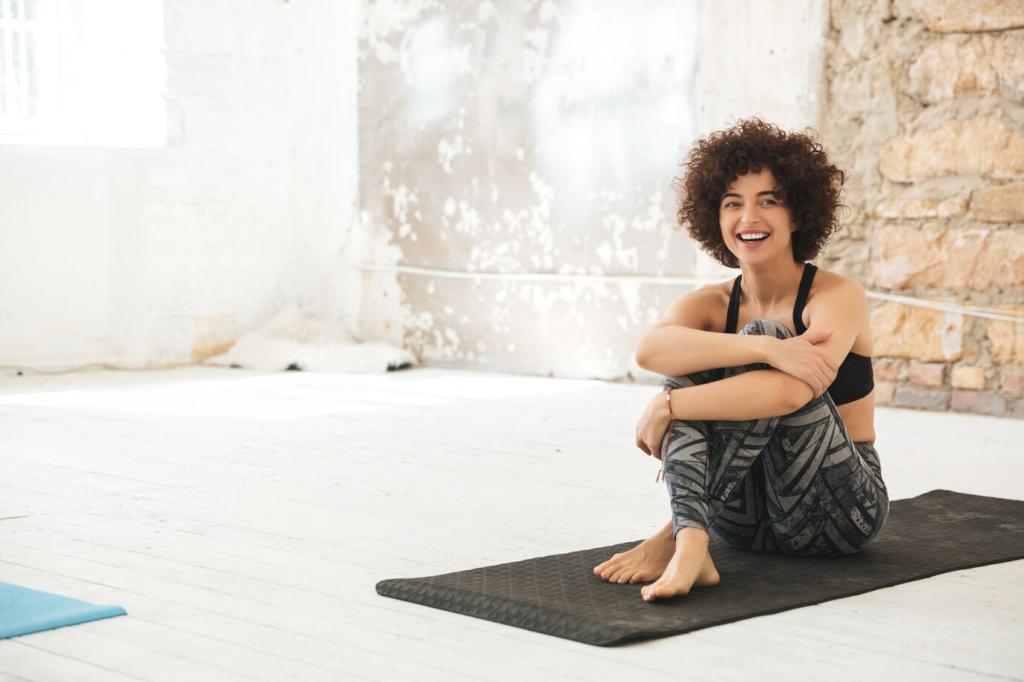Creating a Mindful Gym Routine: Tips and Techniques
Today’s chosen theme: Creating a Mindful Gym Routine: Tips and Techniques. Build a training rhythm that feels grounded, focused, and deeply personal. Learn to listen to your body, elevate your form, and make every rep, breath, and step intentional. If this resonates, subscribe and share how mindfulness shapes your workouts.

Breath as Your Metronome
Treat breathing like a training partner. Inhale during the eccentric, exhale during the exertion, and keep a steady cadence on cardio. Use simple counts, like four in and four out, to guide effort and calm your nervous system.
Attention, Not Tension
Mindfulness shifts strain into skill. By noticing shoulder position, grip pressure, and core engagement, you can ease unnecessary tension while strengthening critical stabilizers. Comment with one cue that instantly improves your form under fatigue.
From Outcome to Process
When you savor the process—tempo, alignment, breath—you stop fearing plateaus and start learning from them. Outcome goals still matter, but process goals keep you consistent. What process habit would you commit to this week?
Choose two or three anchor training days you’ll protect, then plan recovery windows around them. Include gentle mobility or walking on in-between days. This rhythm reduces decision fatigue and keeps you committed without burning out.
Designing a Mindful Weekly Gym Plan
Warm-Up and Cool-Down with Purpose
Sensory Check-In Warm-Up
Scan from feet to crown. Note stiffness, temperature, and energy without judgment. Then move through dynamic mobility—ankle rocks, hip openers, T-spine rotations—paying attention to smoothness, not speed. Let this become your consistent on-ramp.


Tempo-Driven Activation
Prime key movers with controlled tempo. Think slow eccentrics for glute bridges, paused scapular push-ups, or banded rows with deliberate holds. The goal is crisp neural activation, not exhaustion, so your main lifts feel connected and stable.
Mindful Strength Training Techniques
The 2-1-2 Tempo and Pause
Lower for two, pause for one, lift for two. That tiny pause kills momentum and amplifies control. Use it for squats, presses, and rows to feel the targeted muscle, not the ego. Track your best-feeling tempo each week.
Grip, Stance, and Gaze Cues
Set your stance, screw feet into the floor, and choose a steady gaze. These cues stack stability and confidence. Notice how micro-adjustments shift tension patterns. Comment with your favorite cue that cleans up a wobbly rep instantly.
Progressive Overload without Panic
Increase weight, reps, or sets gradually, but keep two quality reps in reserve on most sets. If sleep or stress dips, maintain load and polish form. Mindful progression respects physiology and keeps momentum sustainable over months.

Recovery, Nutrition, and Sleep as Mindful Practice
Pick a reliable, simple sequence: dim lights, stretch ten minutes, read five pages, then lights out. Aim for consistent timing rather than perfection. Sleep quality compounds training gains quietly, like interest on a long-term investment.
Recovery, Nutrition, and Sleep as Mindful Practice
Fuel before with easy carbs and some protein; refuel after with protein and colorful plants. Slow down to actually taste your meals. Noticing fullness and satisfaction prevents overcorrection later and respects your body’s feedback loop.


Tracking, Reflection, and Community
Record date, intention, top three exercises, best cue, and one feeling word. This compact snapshot captures both data and context without overwhelming you. Review weekly to spot what consistently drives your best sessions.


Tracking, Reflection, and Community
Ask: What went well? What felt off? What is one tiny adjustment for next time? Curiosity replaces criticism and unlocks change. Post your reflections to invite support and to normalize imperfect, real-world training.
